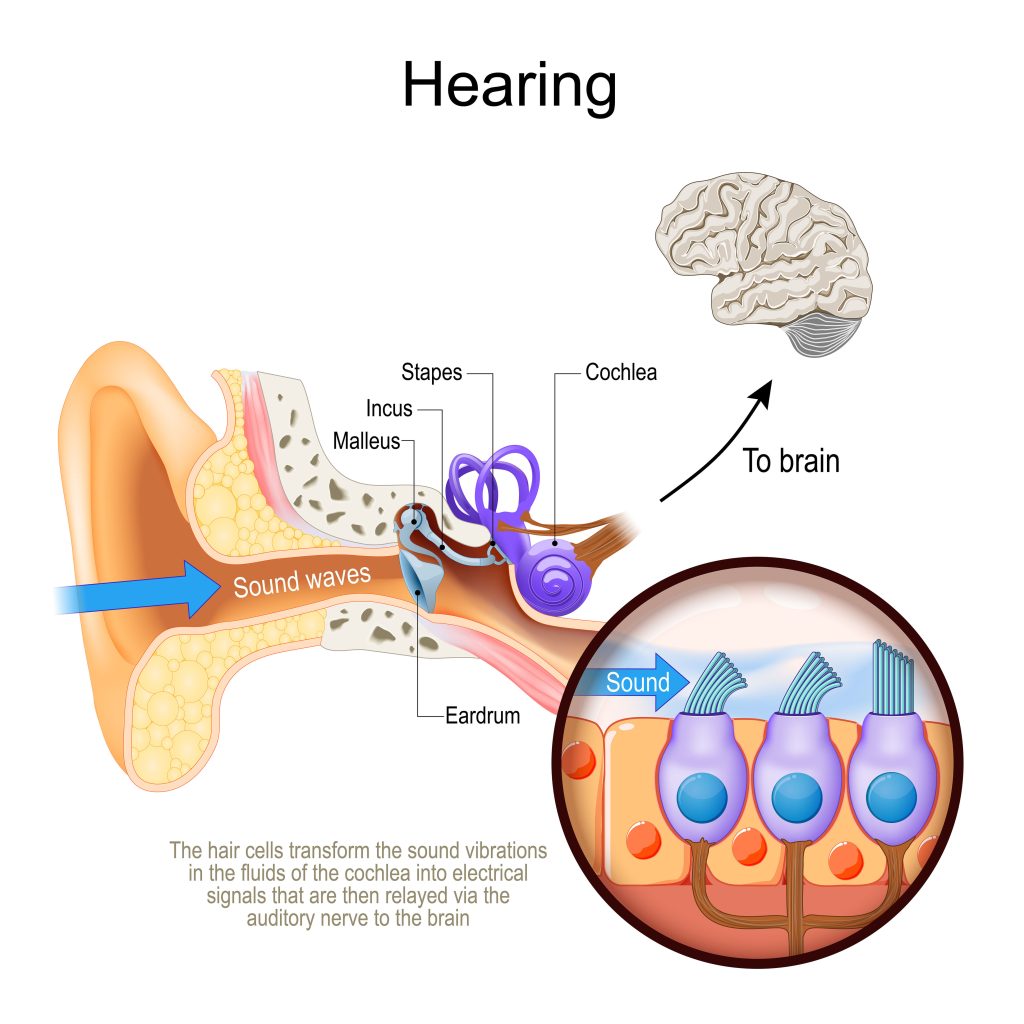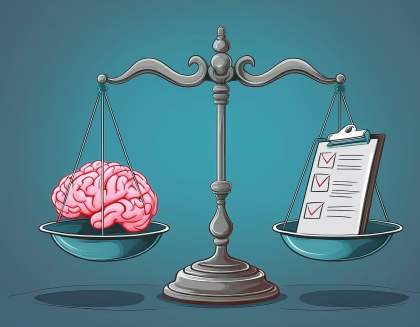Discover how sound influences the human brain, from evoking emotions and memories to affecting physiological states. This comprehensive guide delves into the science of sound waves, the psychological impact of auditory stimuli, and the therapeutic use of sound, offering insights into how we perceive and are affected by sounds in our environment
Table of Contents
As we all know, the human brain is the control room of the body. It is capable of processing and interpreting all of the sensory information we are bombarded with every day. Much of this information you can record and analyse in iMotions. Recently we launched our Voice Analysis Module, that allows researchers to record and analyze vocal pitch, stress and frequency to determine the emotional state of a speaker. In this article we take a look at how sounds in a broad context affect the brain, and how the brain processes the auditory stimulus it receives from the world around it.
Among the various senses, sound holds a unique place as it has the power to evoke emotions, trigger memories, and even influence our physiological state. Understanding the science behind sound and its impact on the brain can shed light on why certain sounds can be soothing and therapeutic, while others may cause stress and discomfort.
Understanding the Science of Sound
The study of sound involves delving into the physics of sound waves and how they propagate through different mediums. Sound waves are created when objects vibrate, creating disturbances in the surrounding air particles. These vibrations travel as waves, reaching our ears and causing our eardrums to vibrate as well. This physical phenomenon is the foundation for our perception of sound.
But what exactly happens when sound waves travel through the air? As sound waves propagate, they undergo a series of complex interactions with the surrounding medium. These interactions can include reflection, refraction, diffraction, and absorption. Reflection occurs when sound waves bounce off a surface, like when you hear an echo in a large empty room.
Refraction happens when sound waves change direction as they pass through different mediums, such as when sound travels from air to water. Diffraction refers to the bending of sound waves around obstacles, allowing us to hear sounds even if they are not directly in our line of sight. Lastly, absorption occurs when sound waves are absorbed by objects or materials, causing a decrease in their intensity.
The Physics of Sound Waves
Sound waves can be characterized by their properties, such as frequency, wavelength, and amplitude. Frequency refers to the number of wave cycles per second and determines the pitch of the sound, with higher frequencies corresponding to higher pitches. For example, a high-pitched whistle produces sound waves with a high frequency.
On the other hand, a low-pitched rumble has sound waves with a lower frequency. Wavelength, on the other hand, represents the distance between two consecutive wave peaks and is inversely related to frequency. This means that as the frequency increases, the wavelength decreases, and vice versa.
Amplitude, another important property of sound waves, determines the loudness of a sound. It refers to the maximum displacement of particles in a medium from their rest position as the sound wave passes through. In simpler terms, amplitude is responsible for how “loud” or “soft” a sound is. Greater amplitudes produce louder sounds, while smaller amplitudes result in softer sounds. This is why a drumbeat produces a louder sound than a whisper.
How the Brain Processes Sound
Once sound waves reach our ears, they are converted into electrical signals by specialized cells called hair cells in the inner ear. These hair cells are incredibly sensitive and can detect even the slightest vibrations caused by sound waves. Once the electrical signals are generated, they travel through the auditory nerve to the brain.
Upon reaching the brain, the electrical signals are processed and interpreted in the auditory cortex. This part of the brain is responsible for analyzing various aspects of sound, including pitch, timbre, and spatial location. Pitch refers to the perceived frequency of a sound, allowing us to differentiate between high and low tones.
Timbre, on the other hand, is what gives different sounds their unique qualities. It allows us to distinguish between the sound of a piano and the sound of a guitar, even if they are playing the same note. Lastly, spatial location refers to our ability to determine where a sound is coming from. This is made possible by the brain’s ability to analyze the slight differences in sound arrival time and intensity between our two ears.

Understanding the science of sound not only helps us appreciate the complexity of this sensory experience but also has practical applications in fields such as music, engineering, and medicine. By studying sound waves and their interactions, scientists and engineers can develop better sound systems, design noise-canceling technologies, and even diagnose and treat hearing disorders. So the next time you listen to your favorite song or enjoy the sounds of nature, take a moment to marvel at the intricate science behind it all.
The Psychological Impact of Sound
Sounds have the power to evoke deep emotional responses within us. This complex relationship between sound and emotion is a fascinating area of research.
When we think about the impact of sound on our emotions, it is important to recognize that certain sounds can elicit specific emotional responses. For example, a gentle rainfall or a soft piano melody may evoke feelings of calmness and tranquility. The rhythmic patter of raindrops can create a sense of peace and relaxation, while the soothing notes of a piano can transport us to a state of serenity.
On the other hand, sudden loud noises or dissonant music can trigger feelings of fear and anxiety. The jarring sound of a car horn or the screeching of brakes can startle us and send our heart racing. Similarly, dissonant music with its clashing tones and lack of harmony can create a sense of unease and tension.
The emotional impact of sound is deeply rooted in our evolutionary history. Throughout human evolution, our ancestors relied on their ability to interpret and respond to sounds in their environment for survival. The sound of a predator’s growl or the rustling of leaves could mean the difference between life and death. As a result, our brains have become finely attuned to certain sounds that signal danger or safety, triggering emotional responses accordingly.

Furthermore, the impact of sound on our emotions is not solely determined by biological factors. Cultural influences also play a significant role in shaping our emotional responses to sound. Different cultures have distinct musical traditions and preferences, which can shape how individuals within those cultures respond to various sounds. For example, certain musical genres or instruments may be associated with specific emotions or cultural contexts, influencing how we interpret and respond to them.
The Role of Sound in Memory and Learning
Sound and music have long been associated with the ability to enhance memory and facilitate learning. The connection between sound and memory is evident in our everyday experiences. We often find it easier to remember information when it is presented to us in a melodic or rhythmic manner. Think about how catchy jingles or songs can help us recall product names or phone numbers effortlessly.
Various studies have explored the impact of sound on memory and learning, revealing intriguing findings. For instance, background music or specific auditory cues can improve memory recall and concentration. This phenomenon, known as the “Mozart effect,” gained popularity after a study suggested that listening to Mozart’s music could temporarily boost spatial-temporal reasoning skills. While the exact mechanisms behind this effect are still debated, it highlights the remarkable influence of sound on our cognitive abilities.
Moreover, sound can also create a multisensory experience that enhances our learning and retention of information. When information is presented to us through multiple senses, such as through auditory and visual channels, it can create stronger neural connections and improve our ability to remember and understand that information.
Overall, the psychological impact of sound is a complex and fascinating topic. From its ability to evoke deep emotional responses to its role in memory and learning, sound has a profound influence on our psychological well-being and cognitive functioning. Exploring this relationship further can provide valuable insights into how we can harness the power of sound to enhance our lives.
The Physiological Effects of Sound
Beyond its psychological impact, sound also has tangible effects on our physiological state. Sound frequency and noise pollution can significantly influence our health and well-being.
Sound Frequency and the Human Body
Research has shown that different sound frequencies can have distinct physiological effects on the body. For instance, low-frequency sounds, such as a deep bass note or a soothing hum, can induce relaxation and deep breathing. These sounds have been found to activate the parasympathetic nervous system, which promotes a state of calmness and relaxation. When we hear low-frequency sounds, our heart rate tends to slow down, blood pressure decreases, and muscle tension eases.

On the other hand, high-frequency sounds, like a sharp whistle or a screeching noise, can create feelings of alertness and tension. These sounds stimulate the sympathetic nervous system, which is responsible for our fight-or-flight response. When exposed to high-frequency sounds, our heart rate increases, blood vessels constrict, and stress hormones like cortisol are released into the bloodstream. This physiological response prepares our body for potential danger or heightened awareness.
Interestingly, certain sound frequencies have been used therapeutically to promote healing and well-being. Sound therapy, also known as vibrational therapy, utilizes specific frequencies to target different areas of the body. For example, sound frequencies in the range of 432 Hz are believed to resonate with the natural frequency of the universe and can promote a sense of harmony and balance within the body.
The Impact of Noise on Health
Excessive or prolonged exposure to loud noises, commonly referred to as noise pollution, can have detrimental effects on our health. Noise pollution is prevalent in urban environments, workplaces, and even our own homes. The constant barrage of noise can lead to increased stress levels, sleep disturbances, and even contribute to the development of cardiovascular diseases.
When we are exposed to loud noises, our body’s stress response is activated. This can result in the release of stress hormones, such as adrenaline and cortisol, which can have negative effects on our cardiovascular system. Prolonged exposure to noise pollution has been linked to an increased risk of high blood pressure, heart disease, and stroke.
Furthermore, noise pollution can disrupt our sleep patterns, leading to sleep disturbances and insomnia. When we are exposed to loud or continuous noise during sleep, our sleep cycles can be disrupted, preventing us from entering deep, restorative sleep stages. This can result in daytime fatigue, decreased cognitive function, and overall reduced quality of life.
Taking steps to minimize noise pollution and create peaceful sound environments is crucial for preserving our well-being. This can include using soundproofing materials in buildings, implementing noise regulations in urban areas, and incorporating relaxation techniques such as meditation or listening to soothing music to counteract the negative effects of noise pollution.
In conclusion, sound not only affects us psychologically but also has a profound impact on our physiological state. Understanding the physiological effects of sound frequency and the detrimental consequences of noise pollution can empower us to create environments that promote relaxation, well-being, and overall better health.
The Therapeutic Use of Sound
Recognizing the profound impact of sound on our minds and bodies, researchers and practitioners have explored the therapeutic potential of sound in various settings.
Sound Therapy and Mental Health
Sound therapy, also known as sound healing, involves the use of different sound frequencies, instruments, and techniques to promote relaxation, reduce stress, and improve mental well-being. From Tibetan singing bowls to binaural beats, the therapeutic power of sound has been harnessed to alleviate anxiety, depression, and other mental health conditions.
Healing Frequencies: The Power of Sound in Physical Therapy
In the realm of physical therapy, sound is also being utilized to accelerate the healing process and alleviate pain. Ultrasound, for example, utilizes high-frequency sound waves to penetrate deep into tissues, promoting tissue regeneration and easing muscle tension. The integration of sound-based therapies alongside traditional methods is expanding the possibilities of rehabilitation and pain management.
The Influence of Music on the Brain
Perhaps the most captivating aspect of sound is its profound impact on our emotions, cognition, and overall brain function. Music, in particular, has the ability to deeply engage our brains and elicit a myriad of responses.
The Cognitive Benefits of Music
Listening to music activates various regions in the brain associated with memory, attention, and emotion. Studies have demonstrated that music can enhance cognitive function, improve concentration, and even boost creativity. Incorporating music into our daily lives can have numerous benefits for our overall brain health.

Music and Mood Regulation
It’s no secret that music has the power to influence our mood. Whether it’s a catchy tune that lifts our spirits or a melancholic melody that resonates with our emotions, music can profoundly impact our mood and emotional well-being. Recognizing the therapeutic potential of music, music therapy is now being utilized as a complementary treatment for mood disorders, providing individuals with a creative outlet and a means of expression.
Sound is far more than a mere sensory experience. Its effects stretch beyond the auditory realm, permeating our emotions, thoughts, and physical well-being. By harnessing the power of sound in various therapeutic and everyday contexts, we can uncover new dimensions of our human experience and enhance our overall well-being.
Free 22-page Voice Analysis Guide
For Beginners and Intermediates
- Get a thorough understanding of the essentials
- Valuable Voice Analysis research insight
- Learn how to take your research to the next level












